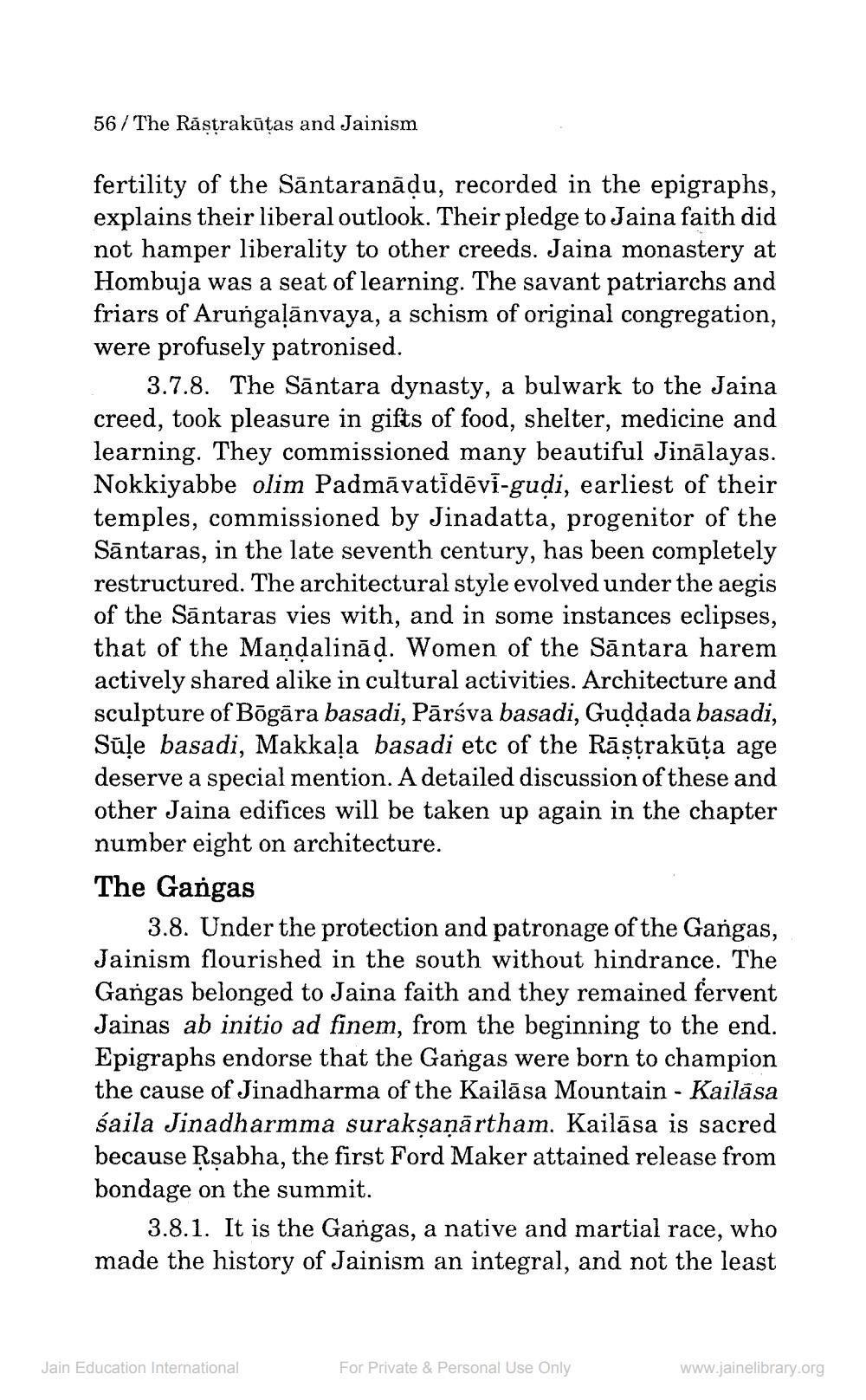________________
56/ The Răstrakūtas and Jainism
fertility of the Sāntaranādu, recorded in the epigraphs, explains their liberal outlook. Their pledge to Jaina faith did not hamper liberality to other creeds. Jaina monastery at Hombuja was a seat of learning. The savant patriarchs and friars of Arungaļānvaya, a schism of original congregation, were profusely patronised.
3.7.8. The Sāntara dynasty, a bulwark to the Jaina creed, took pleasure in gifts of food, shelter, medicine and learning. They commissioned many beautiful Jinālayas. Nokkiyabbe olim Padmāvatidēvi-gudi, earliest of their temples, commissioned by Jinadatta, progenitor of the Sāntaras, in the late seventh century, has been completely restructured. The architectural style evolved under the aegis of the Sāntaras vies with, and in some instances eclipses, that of the Mandalinād. Women of the Sāntara harem actively shared alike in cultural activities. Architecture and sculpture of Bāgāra basadi, Pārsva basadi, Guddada basadi, Sūļe basadi, Makkala basadi etc of the Rāstrakūța age deserve a special mention. A detailed discussion of these and other Jaina edifices will be taken up again in the chapter number eight on architecture. The Gangas
3.8. Under the protection and patronage of the Gangas, Jainism flourished in the south without hindrance. The Gangas belonged to Jaina faith and they remained fervent Jainas ab initio ad finem, from the beginning to the end. Epigraphs endorse that the Gangas were born to champion the cause of Jinadharma of the Kailāsa Mountain - Kailāsa saila Jinadharmma suraksaņārtham. Kailāsa is sacred because Ķsabha, the first Ford Maker attained release from bondage on the summit.
3.8.1. It is the Gangas, a native and martial race, who made the history of Jainism an integral, and not the least
Jain Education International
For Private & Personal Use Only
www.jainelibrary.org




